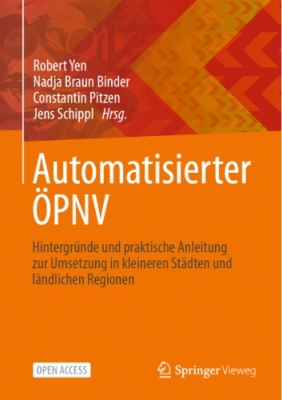The project provides information on the requirements for communication between automated vehicles and other road users. For this purpose, various traffic situations were examined and evaluated in a first step.
Today's road traffic is characterised by constant interaction between different road users in order to ensure a smooth traffic flow in regulated or unregulated situations. Due to an increasing share of automated vehicles (AF) in traffic, the interactions between non-automated and automated road users of different automation levels will inevitably increase successively. It can therefore be assumed that, in the state of mixed traffic, there will be different types of interaction participation and interaction processes over a significant period of time.
But how will today's communication and interaction between road users change as a result? What are the possible consequences for road safety, traffic flow and the traffic climate? These and other questions were addressed in the research project we conducted together with the Chair of Traffic and Transportation Psychology at the Technical University of Dresden.
The starting point was a systematic analysis, classification and evaluation of the means of communication available today in road traffic in a conventional passenger car with an active driver. For this purpose, a total of 154 traffic scenarios in urban traffic, on roads outside built-up areas and on motorways were compiled in a scenario catalogue in which today's road users interact with each other. The basis for this was, among other things, the road traffic regulations valid in Germany, known conflict situations from the accident type catalogue (ORTLEPP & BUTTERWEGGE 2016) and the catalogue of measures against accident clusters (MaKaU; MAIER, BERGER & KOLLMUS 2017). Naturally, the majority of the scenarios here were in the urban area, since on the one hand the need for communication is very great here and on the other hand the insecurity of unprotected road users (cycling and walking) is very high.
The resulting scenario catalogue clearly shows which means of communication are used in which traffic situations and between which interaction partners. The subsequent evaluation of the means of communication used (on the basis of recognisability, comprehensibility, unambiguousness) led to the conclusion that more than half of the scenarios appear to be transferable to mixed traffic without further measures, assuming rule-compliant and cooperative behaviour of the road users and the still existing technology-supported means of communication of a passenger car. In contrast, from today's perspective, there are only a few scenarios that are critical in terms of road safety, traffic flow and traffic climate and therefore cannot be transferred to a mixed traffic situation without further measures. A typical example of such a scenario is the encounter of two road users in a bottleneck.
The findings were incorporated into a workshop with experts from industrial, organisational and traffic psychology with reference to automated driving. Within the workshop, a scientific discussion was initiated about which new means of communication are possible or necessary as a result of increasing vehicle automation, if current means of communication no longer function due to mixed traffic. Assuming that the communication that has taken place so far cannot be provided by an AF, alternative concepts must be created. In this context, not only the way to present the information must be considered, but foremost the question as to what information should (and could) be presented at all needs to be answered.
The vast majority of new on-board communication concepts are visual in nature (e.g. LED lights or strip lights). Although these approaches are technologically relatively easy to implement, difficulties in intuitive comprehensibility are to be expected. In addition to these, the general identification of automated vehicles or projections on the roadway as well as the behaviour of the vehicle itself (e.g. timing of deceleration as "motion gestures") also represent other possible forms of future communication of automated vehicles.
With the increase in automated driving functions in road traffic, there is a clear need for action in the area of communication and interaction between automated and non-automated road users. This is also clearly shown by the scientific discussion, that points out that two topics in particular should be tackled as a matter of priority. On the one hand, the experimental research up to now should be extended to real field conditions in order to examine the effectiveness of new means of communication, taking into account behavioural implications, and to increase the external validity of the available findings. On the other hand, the requirements and needs of the various road user groups, such as children, the elderly and people with limited mobility, for the new means of communication should be given greater consideration in the future in order to continue to enable these groups to participate in traffic as easily as possible.
> PDF | Report - Fundamentals of communication between automated vehicles and road users
> PDF | Appendix - Fundamentals of communication between automated vehicles and road users
Contact us
Erik Schaarschmidt
erik.schaarschmidt@rapp-trans.de
+49 30 2844 9327
Robert Yen
robert.yen@rapp-trans.de
+49 173 20 02 609
Key data
Client: Federal Highway Research Institute (BASt)
Period: 2019 - 2020
Partner: TU Dresden







